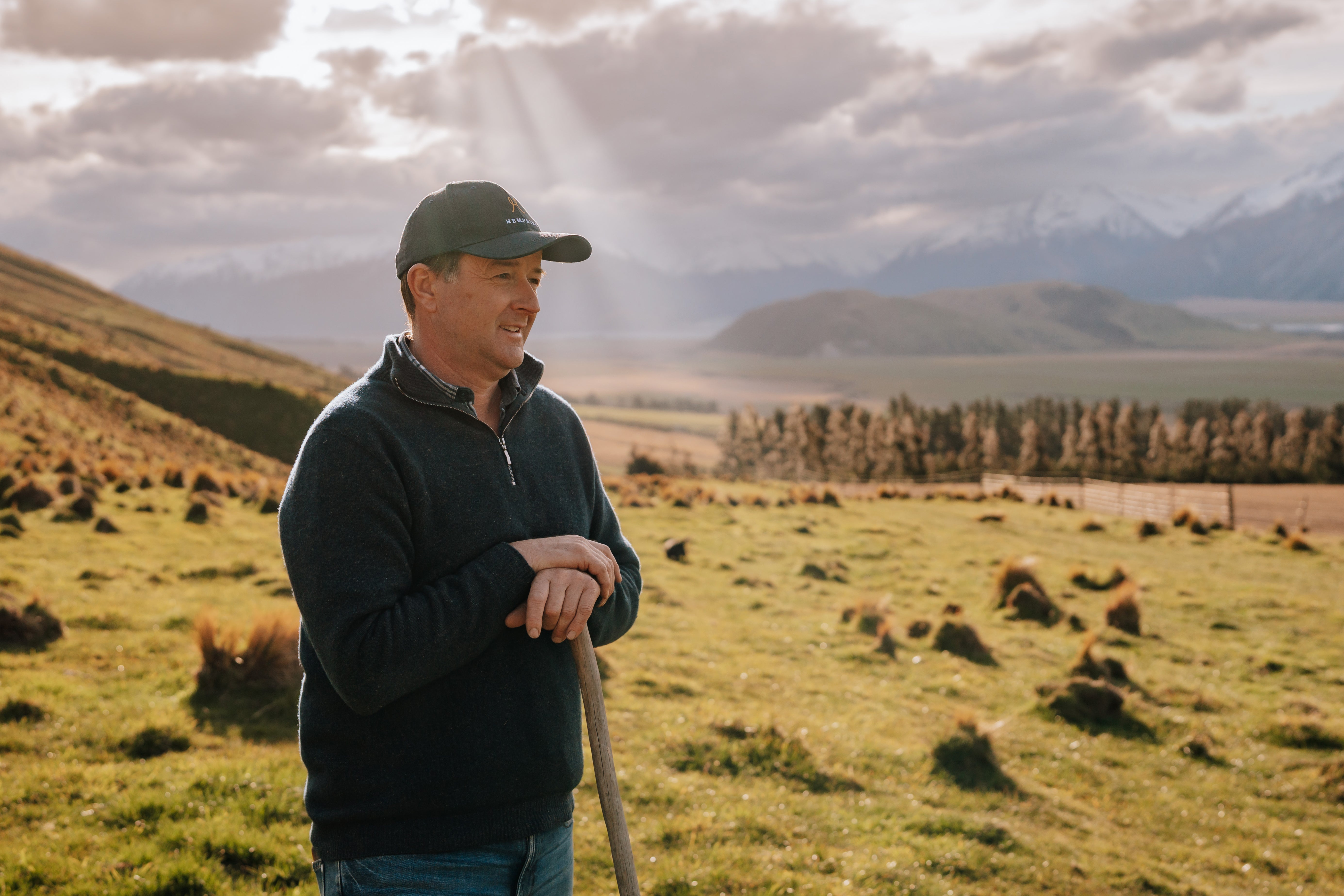Each Hemprino piece begins long before it reaches your wardrobe. It starts on our family farm, Glenaan Station, tucked away in the Rakaia Gorge of New Zealand’s South Island. During shearing season, the woolshed becomes the heartbeat of the farm — filled with skill, teamwork, and care.
We sat down with Paul Ensor, our merino grower, to share what life looks like during one of the most important times of the year.
Q: What does a day on your farm look like during shearing season?
A: Shearing is a well-rehearsed rhythm. I’m usually in the woolshed just after 7 am, checking that the sheep are comfortable and settled. Being indoors is unusual for them, but it keeps their wool dry so the shearers can work effortlessly.
Once everyone’s set up, I catch up with the shearing crew to talk through the plan for the day - and usually share a few laughs. It’s hard work, but they take pride in what they do.
Our wool classer, Kate, spends her day grading each fleece by hand, checking for quality and character. By sunset, over 800 sheep will have been shorn, fed, and returned to pasture. Watching the process - the rhythm, the teamwork, and the craftsmanship - is something I never tire of.
Q: What makes Glenaan Station a special place to grow merino?
A: Glenaan sits on the fringe of the high-rain belt in the Rakaia Gorge. That means we get the best of both worlds - plenty of sunshine but not too much rain. The result is bright white wool that processors prize.
Our north-facing slopes keep the farm sun-drenched through winter, and our natural springs provide pure artesian water. The pastures are a mix of native grasses and clover-rich legumes, giving the sheep the nutrition they need to thrive.
Q: How do you care for the land and animals to produce such high-quality wool?
A: Generations of knowledge guide what we do. We make sure the sheep always have consistent, high-quality feed and space to live naturally.
Everything we do is based on the five basic freedoms: the freedom to live naturally, and freedom from thirst, discomfort, distress, and disease. Those principles help us produce strong, healthy sheep - and beautiful, high-quality wool.
Q: What does it mean to see your merino turned into Hemprino knitwear?
A: It’s a real sense of pride. Seeing our wool transformed into knitwear that people love - that they find comfort in and feel good wearing - is hard to describe.
Knowing that it’s renewable, biodegradable, and made with care for the land makes it even better. It’s a full-circle feeling, seeing the story of our farm woven into something people value.
Q: What’s something most people wouldn’t know about growing merino?
A: Merino sheep are actually more like browsers than grazers. When they’re thriving, they’ll seek out a variety of plants - herbs, clovers, native grasses - to give themselves a balanced diet. It’s their natural way of keeping both the land and themselves in harmony.
Q: How has farming changed over the years?
A: Technology has made it easier to monitor stock, but there’s still no substitute for getting out on the land and watching the animals. Good stockmanship is about observation - knowing when sheep are content, when they’re stressed, and what they need.
Farming is still a craft. You can’t automate care or intuition. Those come from experience and time on the ground.
A: Connection is about belonging - feeling part of something bigger than yourself. It’s about caring for the land and animals so that future generations can do the same. For us, it’s not just about producing wool; it’s about leaving a legacy of respect, stewardship, and pride.
At Glenaan Station, every fleece tells a story of patience, care, and connection - to the land, to the animals, and to the people who wear it. That’s the heart of Hemprino.
From our farm to your wardrobe - thank you for being part of the journey.

